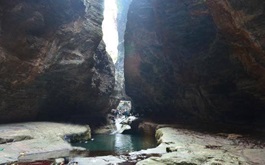At a distance of 1 km from Tirumala Bus Station, Lord Venkateswara Temple is an ancient and sacred temple dedicated to Sri Balaji, an incarnation of Lord Vishnu. Tirumala is the richest and most visited temple (of any faith) in the world. Tirumala is an ideal sacred getaway from Chennai to spend a weekend.
Tirumala, abode of Sri Venkateswara (also known as Balaji), is one of the most celebrated pilgrimage centers in India and it attracts millions of devotees every year. The temple is situated atop the Tirumala Hills which consists of seven peaks known as Sapthagiri at an altitude of 3,200 feet. The seven peaks represent the seven hoods of Adishesha, the serpent on whom lies Lord Vishnu. The temple lies on the seventh peak -Venkatadri.
The temple of Lord Venkateswara was built by the Tamil king Thondaimaan. The Pallavas of Kanchipuram (9th century), Cholas of Tanjore (10th century), Pandyas of Madurai and Vijayanagara Kings (14th & 15th centuries) regularly visited the temple and made large contributions towards its development. Especially, Sri Krishna Devaraya of Vijayanagara Empire contributed a lot to the temple. The statues of Sri Krishna Devaraya and his spouses stand in the premises of the temple.
The Tirumala shrine is a masterpiece of Dravidian architecture. The main sanctum contains 2 m high standing idol of Venkateswara on a lotus accompanied by his consorts Bhudevi and Sridevi. The most striking feature of the awe-inspiring black idol is its fabulous diamond crown, which is said to be the most precious single ornament in the world. The Sanctorum 'AnandaNilayam' has a glittering gold covered Vimana and gold covered gates.
Sri VenkateswaraBrahmotsavam, a nine-day event, which is celebrated every year in month of September/October, is the major event in the temple. During Brahmotsavams the processional deity Malayappa along with his concerts Sridevi and Bhudevi, is taken in a procession in four mada streets around the temple on different vahanams. During Brahmotsavams, The temple will witness lakhs of devotees particularly on Garuda seva. VaikuntaEkadasi, Rathasapthami, Rama Navami, Janmashtami, Ugadi, Teppotsavam (Float Festival), Sri PadmavatiKalyanam, Pushpayagam, Pushpapallaki, Vasanthotsavam are the other major festivals celebrated with great splendor.
Special Darshan is available for elders (>65 years), parents with infants (<1 year) and physically handicapped. There are different darshan methods. The duration of Darshan depends on the crowd sometimes takes more than 24 hours. One has to get a Kankanam (token) with a specific time allotted for entry.
There are different types of accommodations provided by temple board which has to be booked at least 2 months in advance. No private accommodations are available on Tirumala hill.
Please check TTD website http://www.tirumala.org/

At a distance of 1 km from Tirupati Railway Station & 22 km from TirumalaTirupatiBalaji Temple, Sri Govindaraja Swami Temple is one of the important temples in Tirupati, located in the heart of the city. It is one of the best places to visit in Tirupati city.
The original temple had Sri Parthasarathi as the main deity. Sri Ramanuja added the Sri Govindaraja deity in 1130 AD. Yadavaraya Dynasty made several gifts for decoration of the chariot and carrying necessary repairs of the temple. The temple came in for greater importance in 1506 AD during the rule of Vijayanagara Dynasty and from then onwards different rulers in a different way developed the temple.
This famous temple in Tirupathi is a remarkable achievement of the ancient south Indian architecture. It has an impressive outer gopura and an inner gopura. The inner most gopura is the earliest one, dating from the 14th century and has carvings that depict scenes from Ramayana and Lord Krishna's life. The temple has two main shrines dedicated to Lord Vishnu and Lord Krishna. The shrine to the north is Sri Govindaraja and the shrine to the south is Sri Parthasarathi (Lord Krishna). The idols of Rukmini and Satyabhama are also found here.
The presiding deity Sri GovindarajaSwamy is found lying on Ananta. He is considered as brother of Lord Venkateswara. The GovindarajaSwamy was the caretaker of massive wealth borrowed from king Kubera for the marriage ceremony of Lord Venkateswara with Padmavathi Devi. He efficiently utilized this wealth to conduct one of the most glorious marriages in the mythology. Hence GovindarajaSwamy is considered to be the god who helps you elevate your wealth and efficiently manage the wealth acquired.
This temple complex includes museum and smaller shrines like KalyanaVenkateswara Swami Temple, Andal Temple, SalaiNachiyar Devi Temple, Ramanuja Temple, VyasarayaAnjaneyaswami Temple, Alwar Temples, Chakrathalwar Temple, ManavalaMahamuni Temple, Vedanta Desikar Temple and Anjaneyaswami Temple.
This is the biggest temple in Tirupati town and attracts lakhs of pilgrims. The abhisekhas are performed to a small idol as the main statue is said to have built using sand. This temple is managed by TirumalaTirupatiDevasthanm board.
The Bramhotsavam of GovindarajaSwamy during the month of May-June (Vaisakha) and annual Float festival held in February - March, attract a large number of devotees every year.
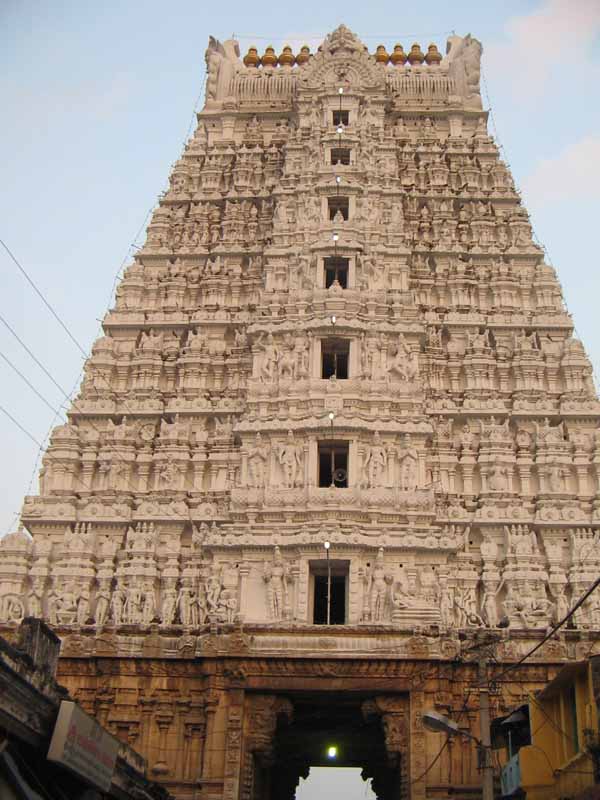
At a distance of 15 km from Tirupati, 33 km from TirumalaTirupatiBalaji Temple, 147 km from Chennai, 238 km from Bangalore & 574 km from Hyderabad, Chandragiri is an ancient town and the seat of Yadavaraya Kings from 11th to 13th centuries and fourth capital of Vijayanagar Dynasty. Chandragiri along with Tirupati is one of the ideal Chennai weekend getaways and a major heritage / historical site in Andhra Pradesh. It is one of the prime Tourist places in Tirupati town.
Chandragiri near Tirupati is famous for the historical fort, built in the 11th century. Chandragiri was under the rule of Yadavaraya Dynasty for about three centuries and came into control of Vijayanagar rulers in 1367. It came into prominence during SaluvaNarasimhaRayalu. Chandragiri was the 4th capital of Vijayanagar Empire and they shifted their capital here when Golconda sultans attacked Penukonda. In 1646, the fort was annexed to the Golconda territory and subsequently came under Mysore rule before controlled by British.
This famous temple in Tirupathi is a remarkable achievement of the ancient south Indian architecture. It has an impressive outer gopura and an inner gopura. The inner most gopura is the earliest one, dating from the 14th century and has carvings that depict scenes from Ramayana and Lord Krishna's life. The temple has two main shrines dedicated to Lord Vishnu and Lord Krishna. The shrine to the north is Sri Govindaraja and the shrine to the south is Sri Parthasarathi (Lord Krishna). The idols of Rukmini and Satyabhama are also found here.
The Fort is built on a huge rock at an altitude of 183 meters. The southern side of the hill is enclosed by strong walls, surrounded by a ditch to prevent any intruder from entering into the fort. The Chandragiri Fort has eight ruined temples inside the fortification along with Raja Mahal, Rani Mahal and other ruined structures.
The Raja Mahal Palace is now an archaeological museum. The palace is one of the finest examples of Vijayanagara architecture. This imposing three storied palace adorned by the crowning towers represents Hindu architectural elements. The palace was constructed using stone, brick, lime mortar and devoid of timber. The central tower that covers durbar hall rises through two stories. It is said to be the same venue where Sri Rangaraya granted the site of Fort St. George to the British in 1640. The floors are supported by massive pillars while the walls bear fine plaster and stucco decorations.
Queen's Palace is Similar to the Kings palace in style and method of execution. Contrary to the popular belief that this place was meant for the queen, the records available from the basement speaks this building was used as commander's quarters.
Timings: 10 AM - 8:45 PM on all days except Friday. Entry fee: Rs.10 per person.
Sound & Light Show Timings:
1st Show (Telugu): Nov-Feb: 6.30 pm to 7.15 pm and Mar-Oct: 7.00 pm to 7.45 pm 2nd Show (English): Nov-Feb: 7.30 pm to 8.15 pm and Mar-Oct: 8.00 pm to 8.45 pm
Light show cost: Adult: Rs.20, Child: Rs.10

At a distance of 4 km from Tirupati Railway Station & 25 km from TirumalaTirupati Temple of Lord Venkateswara, KapilaTheertham is a famous waterfall situated inside KapileswaraSwamy Temple at the foot of Sheshadri Hills in Tirupati. This is a unique waterfall where the water of mountain streams drop from a height of over 100 feet into a large pond in the temple premises. It is one of the must visit tourist places in Tirupati and a major pilgrimage site in Tirupati city.
KapilaTheertham temple is the only Shiva temple in the vicinity of Tirupati. It is also said to be one of the 108 sacred teerthas (springs) on Tirumala hills. The Siva lingam here is made of brass. A huge stone statue of a seated bull Nandhi, greets devotees at the entrance to the temple.
According to legend, Saint Kapila Maharishi was said to have lived here, worshipped and meditated in the cave in front of the idol of Lord Shiva, hence the placed is named after the saint as KapilaTheertham. Lord Shiva is said to have blessed Sage Kapila with a vision of himself and his consort. This temple received very good support from the Kings of Vijayanagara between 13th and 16th centuries, especially from Krishna Devaraya.
There are many sub-shrines with-in the main temple premises. Temples for Kamakshi, Vinayaka, Subhramanya, Agastheeswara and Sri Krishna are few among them. Both the temple and the waterfall are considered to be highly sacred. A holy dip here is believed to rid the devotees of all sins. This is a good place to visit during the monsoons as the water fall looks breathtaking. The waterfall would be empty in late winter and summer seasons.
The famous festivals celebrated in the temple are Brahmotsavam, Annabhishekam, MahaShivarathri and VinayakaChaturthi. KapileswaraSwamyBrahmotsavam is the biggest event of the temple celebrated in during the month of February. Another auspicious day is the full moon day in the Karthika Month.

At a distance of 5 km from Tirupati Railway Station & 27 km from TirumalaTirupatiBalaji Temple, Tiruchanur also called as Alimelumangapuram is famous for Alimelu Manga Temple dedicated to goddess Padmavati, the consort of Lord Venkateswara. It is believed that pilgrimage to Tirumala is incomplete without a visit to Sri PadmavatiAmmavari Temple at Tiruchanur.
According to ancient scripts, as Lord Venkateswara Temple at Tirumala was not easily accessible, a new temple called TiruvalanKoil was constructed at Tiruchanur near Tirupathi to house Lord Venkateswara in 8th century by Pallavas. The temple was later dedicated to Padmavati Devi by YadavaRayas in 12th century.
According to the legend, Lord Vishnu showed his reverence towards the sage Bhrigu, even though the sage had insulted Vishnu. In anger, Sri Maha Lakshmi immersed herself for 12 years here in pushkarini the banks of Swarnamukhi River and emerged from it in a Golden Lotus in the 13th year on Panchami day of Kartika month. The temple symbolizes reunion of Lord Venkateswara and Goddess Padmavathi.
The temple was built in Vijayanagara style and is made in white and gold around the southern banks of SwarnamukhiPushkarini. The temple is an impressive structure with a Gopura, Mandapa and the sanctum. The presiding deity, Sri Padmavati Devi is seated in Padmasana holding a lotus. Tiruchanur also comprises Sri Krishna Temple, Sri SundararajaSwamy Temple and Sri SuryanarayanaSwamy Temple. It is a tradition to first worship Sri Krishna and then to take darshan of Sri Padmavati.
The Brahmotsavam of Goddess Padmavathi is celebrated during the month of KarthikaMasam is the main festival here. The offerings to the goddess from Lord Venkateswara are brought to Tiruchanoor on a specially decorated elephant with great honor.
This place can be reached by Bus/Auto from Tirupati Bus Station. Only Hindus are allowed in the temple.
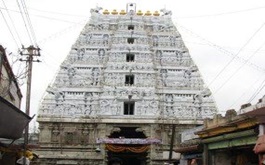
At a distance of 12 km from Tirupati, 3 km from Chandragiri& 29 km from TirumalaTirupati Temple of Lord Venkateswara, SrinivasaMangapuram is famous for Sri KalyanaVenkateswara Swami Temple. This is one of the important temples near Tirupati town and is located towards Chandragiri town. It is one of the must visit Tirupati Temples.
The ancient temple at this site was discovered by some devotees in 1540 CE. The present form of the temple came into existence by the relentless efforts of ChinnaThirumalaiyya, the grandson of Annamacharya. According to legend, Lord Venkateswara stayed here after his marriage with Sri Padmavati Devi. Once the marriage ceremony got over, Venkateswara paid a visit to the holy ashram of sage Agasthya located near the banks of the river Swarnamukhi in Chandragiri Hills. It is believed that sage Agasthya requested them to stay in his ashram for six months. Later, the location where the Lord stayed with his bride became a holy shrine and acquired the name, Sri KalyanaVenkateswaraSwamy Temple.
This ancient temple which is under the control of Archaeological Survey of India (ASI) is maintained by TirumalaTirupatiDevasthanams since 1967 and utsavams and rituals in this temple are being performed since 1981. Today, Sri KalyanaVenkateswaraSwamy temple is considered as of the sacred temples of Venkateswara. Those who are unable to make it to Tirumala can have darshan of Lord Sri KalyanaVenkateswaraSwamy to fulfill their wish. Sri Rama Temple, Sri Ranganayaka Temple, Sri Padmavathi and Sri Andal Temple are other shrines in this complex. Devotees can also find small shrines including Sri SaktiVinayaka Swami, Sri Veerabhadra Swami, Sri Avanakshamma, Sri Parasareswara Swami and Sri Agastheeswara Swami.
This temple carries significance for newlywed couples who offer prayers first in this temple just after their wedding. It is also said that individuals having trouble getting into wedlock can pray here and get rid of troubles. Kalyanotsavam to the Lord is performed here every day. Devotees get rid of their troubles by attending this ritual.
Annual Brahmotsavam and ShakshatkaraVaibhavam are major festivals celebrated here.

At a distance of 37 km from Tirupati, 113 km from Chennai, 291 km from Bangalore, 375 km from Vijayawada and 552 km from Hyderabad, Srikalahasti, popularly known as Kalahasti is one of the ancient and most important Shiva Kshetras situated in Chittoor district of Andhra Pradesh. Srikalahasti is famous for Srikalahasteeswara Temple (referred as Srikalahasti Temple) built in 10th century. The entire temple was carved out of the side of a huge stone hill. Srikalahasti is among ideal weekend getaways from Chennai city for a two day trip and also one of the top places to experience AP Tourism.
Srikalahasti got its name from three words - 'Sri' meaning a spider, 'Kala' meaning a serpent and Hasti meaning an elephant, as these three creatures are believed to have worshipped Lord Shiva at this place and attained salvation. It is located on the banks of the River Swarnamukhi, which is a tributary to River Pennar, one of the major rivers in South India. The ancient Shiva temple of Srikalahasti finds reference in the three ancient epics the SkandaPurana, Shiva Purana and the LingaPurana. According to SkandaPuranaArjuna came to this place to worship Kalahasteeswara (Lord Shiva) and met Rishi Bharadwaja on the peak of a hill.
The temple of Kalahasteeswara is one of the most impressive Siva temples in India. This temple features 120 feet high enormous and ancient gopuram over the main gate. The entire temple is carved out of the side of a huge stone hill. The initial structure of this temple was constructed by Pallava kings in the 5th century. Chola kings renovated the temple and constructed the main structure in 10th century. The outer walls and the 4 gopurams were constructed in the period of Sri VeeraNarasimharayar of Vijayanagara kingdom. The main gopuram and the 100 pillar mandapam were constructed by Krishna devaraya, the great Vijayanagara king in 1516.
Sri kalahasti is regarded as one of the PanchaBhootaSthalams of Lord Shiva; the other four includes Tiruvannamalai, Thiruvanaikaval, Chidambaram and Kanchipuram. The place is representative of the VayuSthalam or the Element of Air. This temple is also associated with Rahu and Ketu, two of the nine celestial bodies in the Indian astrological scheme. It is believed that a visit to this temple will provide relief to those who have the planet Rahu in inimical positions in their horoscopes.
This small town is dotted with many small and big temples; most of which were constructed during the reign of Pallava, Chola and Vijayanagara kings. Srikalahasti is associated with BhaktaKannappa, one of the greatest devotees of Lord Shiva how offered his eyes to the lord. The festival of MahaShivaratri is celebrated with great zeal in February to March.
Renigunta is the nearest airport (26 km from Kalahasti) which serves direct flights from Delhi, Hyderabad, Chennai as well as Bangalore. Kalahasti Railway Station is well connected with Hyderabad, Kakinada, Machilipatnam, Vizag, Bangalore, Karimnagar, Patna, Kochi, Puri and Bilaspur. Buses are available from Srikalahasti to the adjacent cities like Tirupati, Chennai, Vizag, Bangalore, Vijayawada and Hyderabad.
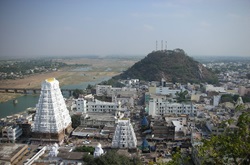
At a distance of 2 kms from Tirupati Railway Station & 24 km from TirumalaTirupatiBalaji Temple, Kodandarama Swami Temple is situated in the heart of Tirupati town. The presiding deities are Sita, Rama and Lakshmana.
This temple was constructed by the Cholas in 10th century AD. The temple of Anjaneyaswami, which is directly opposite, is a mini shrine situated in the temple complex. According to legend, this temple commemorates the visit of Sri Rama to Tirupathi. The festivals of Ugadi and Sri Ramanavami are celebrated in this temple on a grand scale.
Every year the temple celebrates the Brahmotsavams to the Lord Sri Rama.
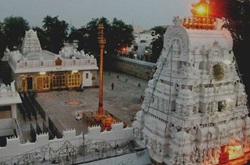
At a distance of 18 km from Tirupati& 40 km from TirumalaTirupatiBalaji Temple, the PrasannaVenkateswara Swami Temple is located at Appalayagunta.
The idols of Goddess Padmavathi and Sri Andal are also seen in this ancient temple. The temple was constructed by the Rajas of Karvetinagar. The temple also houses a shrine for Anjaneya. The imposing mammoth image of the wind-god is worshipped by devotees for relief from 'Chronic Diseases'. The presiding deity in this temple, unlike in the main temple, is in the AbhayaHastha pose.
The annual Brahmotsavams and Teppotsavam are celebrated in a grand manner.
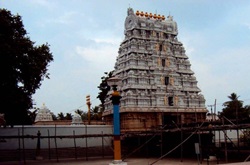
At a distance of 12 km from Tirupati, 3 km from Chandragiri& 29 km from TirumalaTirupatiBalaji Temple, Agastheeswara Temple is located in Mukkoti at the confluence of three rivers, Swarnamukhi, Bhima and Kalyani.
Dedicated to Lord Shiva, this temple has three beautifully sculptured entrances that heighten the grandeur of the hall inside. A separate shrine for Goddess Parvati is also located with in the temple. Just opposite the shrine in the middle of the river is a mandap on which the statues of Lord Venkateswara, Ayyappa and Ganapati have been installed. A small shrine dedicated to Rama, Sita, Lakshmana and Anjaneya is located near the tank.

At a distance of 20 Kms from Tirupati& 38 km from TirumalaTirupatiBalaji Temple, Kalyani Dam is a picturesque dam constructed on the River Kalyani. The dam is situated in the Rangampet forest on Tirupathi-Madanapallee Road. This beautiful dam is the main source of water supply for Tirupati and Tirumalai.
The surroundings of the dam are beautiful and offers wonderful experience to the visitors.

At a distance of 2 km from Tirumala Bus Station & 2.5 km from TirumalaTirupatiBalaji Temple, SilaThoranam is a natural rock formation in the shape of an arch and it is the only one of its kinds in Asia. This is located close to SrivariPaadalu which is the highest point of Narayanagiri. SilaThoranam is one of the best places to visit in Tirumala.
SilaThoranam literally means garland of rocks. It is commonly known as Rock Garden. It is a natural stone arch which was found by archeologists excavating this area in 1980. This natural arch has two different types of rocks which are connected by a link. The arch like rock formation with a length of 25 feet and a height of 10 feet is said to be formed by weathering and wind erosion. The formation is categorized as pre-Cambrian and dates back to millions of years ago. The age of the rock itself has been estimated to be about 2500 million years, and the age of the arch is computed to be about 1500 million years.
It is said that there are only two other sites like this in the entire world itself. The other two are Rainbow Arch at Utah in the USA and the Cut Through in the UK. The best time to visit the arch is between 6 am to 8 am during sunrise or during sunset when the Arch looks even more striking and mystifying in the light of the sun.
This place is on the way to SrivariPaadalu. The Chakra Teertham is in the same complex, so make it a point to visit it at the same time. There are several cabs available to this place from the main temple, both shared and private.
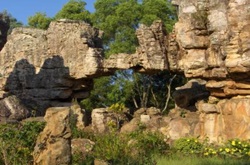
At a distance of 4 km from Tirumala Bus Station & 5 km from TirumalaTirupatiBalaji Temple, SrivariPaadalu (also called Tirupada - Holy feet of the Lord) are located at the highest point of Narayanagiri and is situated near to SilaThoranam. It is one of the important places to visit in Tirumala.
As per the mythology this is the place where Lord Venkateswara first set his feet on Earth. The foot print is available here and devotees visit this place at the top of Narayanagiri hill for the divine sight. The beautiful Tirumala temple complex and town is completely revealed from this spot. Near Tirupada there is a garden with a Shiva temple. The SrivariPaadalu now is protected with glass frame on a firm stone platform and pilgrims can't touch the foot prints.
The road to this place from the main temple of Tirumala is very scenic with dense forest filled with green vegetation. There are several cabs available to this place from the main temple, both shared and private. Pilgrims have to climb 300 odd steps to reach this divine spot from where a beautiful top view of the temple town 'Tirumala' is very delightful to watch.
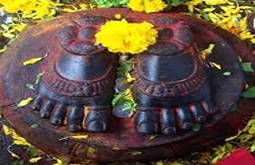
At a distance of 3 km from Tirumala Bus Station & 5 km from TirumalaTirupatiBalaji Temple, Akasa Ganga is a sacred waterfall on the foothill of VenkatadriTirumala. The waterfall is about 5 km from the main TirumalaTirupatiBalaji Temple and the TirumalaNambi family is allowed to carry the holy water from the waterfall to the temple. It is one of the popular Tirumala places to visit.
This holy theertha is found it's rendering in the Vedas and it is believed that Akasa Ganga Teertham originates from the lotus feet of Lord Venkateswara. In ancient days, the priests of the temple carry the water all the way from this part of jungle to the temple in the morning hours. This custom is still continued today, though limited to special occasions. Recently, water lines were laid into the Lord Venkateswara temple to carry the water from Akasa Ganga for regular rituals of the deity.
Bathing in this water is really refreshing and is said to wash away the evils and confer good fortune. According to the belief the childless will have children if they pray by tying cradle on the tree near Akasa Ganga following a dip in its holy waters.
The best time for visiting this place is during the rainy season, this place looks even more beautiful with greenery around and with white water gushing out of the rocks.
There are several cabs available to this place from the main temple, both shared and private. This place needs some trekking for 5-10 minutes

At a distance of 15 km from Tirumala and spread around Tirumala Hills, Sri Venkateswara Wildlife Sanctuary covers an area of 353 Sq. kms, over Kadapa and Chittoor districts of Andhra Pradesh. Established in 1989, the park is a heaven for nature lovers with unfathomable valleys and striking waterfalls, surrounded by Seshachalam and Tirumala Hills. The waterfalls is also a great place for trekking and it's a nice place to visit from Chennai as a weekend getaway.
The wide range of fauna found here includes Tiger, Civet, Jackal, Black Buck, Panther, Spotted Deer, Ibex, Sloth Bear, Bonnet Monkey, Wild Dogs, Bison, Jackal, Fox, Rare Golden Gecko, Jungle Fowl, Indian Giant Squirrel, Tree Shrew, Flying Lizards, Nilgai, Wildboar, Occasional Leopard and Hyena. Fauna comprises of more than 100 species of birds, including Crested Serpant Eagle, Ashy Crowned Finch Lark, Indian Roller, Kingfishers, White bellied Woodpecker, etc.
The best gateways to the sanctuary are Papanasam Dam on Tirumala Hills and Talakona waterfalls which is 64 km from Tirupati by Road. The best way to explore this beautiful sanctuary is by foot from these two entry points.
There are several trekking trails within the sanctuary with duration ranging from half day trek to 3 full days. TumburaThirtham is situated within the sanctuary which can be completed within 4-5 hours from Papanasam in Tirumala. The most popular trail starts from Talakona Falls and ends at Papanasam Bridge with overnight stay in the sanctuary. It is usually a 2 day trek but is also done as 3 day expedition. The trails are not marked properly and having an experienced guide is definitely recommended. There are several waterfalls like Gunjana&Gundalakona.and numerous streams within the sanctuary and drinking water is not an issue. Other popular trail starts from Talakona and ends at Koduru village situated on Tirupati - Rajampet Road.
The total trek distance from Talakona to Papansam would be around 30 km. The difficulty level is moderate to slightly difficult. Permission to enter the sanctuary can be obtained from DFO Tirupati Phone - 0877-2280980. Permission can be obtained from Talakona as well, near the entrance to the falls.
The trekking is often banned due to sandalwood smuggling in the forest. Better to check with DFO before planning the trek within the sanctuary.
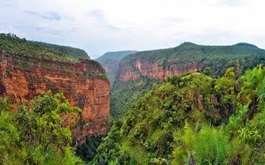
Situated at a distance of 2 Kms from Tirumala Bus Station & 3 km from TirumalaTirupatiBalaji Temple, Chakra Theertham is the site for a water body near SilaThornam and is associated with an interesting legend. According to the legend, Lord Brahma wanted to observe penance and to clean this place, Lord Vishnu plunged his SudershanaChakram, thus creating a crater. It is one of the famous places of sightseeing in Tirumala.
Visiting this site is considered as good as touching the Lotus Feet of the Lord, which will deliver the devotees from their travails. The waterfall here is an amazing sight to behold and is the location where the idol of Lord Venkateswara is brought during the Brahmotsvam celebrations.
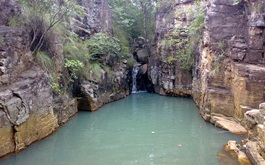
At a distance of 1 Km from Tirumala Bus Station, Pushkarini is a huge lake adjacent to Sri Venkateswara temple. Some pilgrims bathe in Pushkarini before entering the main temple.
The Pushkarini was originally in Vaikuntam and belonged to Sri Maha Vishnu. It was set on Earth by Garuda for the sport of Sri Venkateswara. The mukkoti of Pushkarini (the merging of over three croreteerthams in Swami Pushkarini) occurs on MukkotiDwadasi (the twelfth day of the fortnight of DhanurMasa). Therefore, it is believed that bathing in the Swami Pushkarini on this day, is equivalent to bathing in the holy river, Ganges.
On the western bank of the Swami Pushkarini is the Sri Varahaswami temple, while on its southern bank is the Sri Venkateswara temple. The wooden-float festival (Teppotsavam) of Lord Sri Venkateswara in the month of February/March and Avabhrudhasnanam or Chakrasnanam during Brahmotsavam takes place in the Pushkarini.

At a distance of 1 Kms from Tirumala Bus Station, Sri Varahaswami Temple is located to the north of the Sri Venkateswara Temple on the banks of Pushkarini. According to legend, Tirumala was originally AdiVarahaKshetra and it was with his permission that Lord Sri Venkateswara took up residence here.
According to Brahma Purana, pilgrims should first offer naivedyam to Sri AdiVaraha Swami before visiting the Sri Venkateswara Temple. According to AtriSamhita (Samurtarchanadhikara), the Varaha Avatar is worshipped in three forms, AdiVaraha, PralayaVaraha, and YajnaVaraha .The idol of Sri Varahaswami here is that of AdiVaraha.
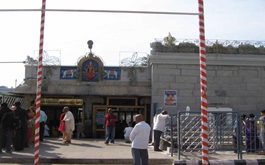
At a distance of 1 Kms from Tirumala Bus Station, Sri BediAnjaneyaswami Temple dedicated to Lord Hanuman is located on Sannidhi Street, opposite to the main temple.
In the Vaishnavite tradition, it is customary to have either Garuda or Anjaneya opposite the main temple. The idol of Sri Anjaneya here is shown with its hands folded in supplication (the Anjali pose). Sri Anjenaya is a devotee of Sri Rama, just as Garuda is of Sri Maha Vishnu.
Abhishekam is performed every Sunday and special offerings are made on Hanuman Jayanti.
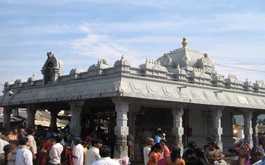
The TTD Gardens are a group of ornamental, landscape and flower gardens occupying an area of 460 acres in Tirupati and Tirumala.
There are four nurseries at Tirumala at Travelers Bungalow area, Gogarbham Dam area, Sri Padmavathi Guest House area and Divyaramam area wherein ten lakh plants are propagated annually. Hybrid varieties of crotons, hibiscus, and bougainvilleas have been released through hybridisation and mutation and named after great personalities.
The great Vaishnavaacharya Sri Ramanuja and his disciple Sri Anandalwar are believed to have been responsible for starting these gardens in the 14th century. Legend has it that the Tirumala flower gardens were cultivated by Sattada Sri Vaishnavas under the name of DasaNambis who made flower garlands for use in temples in Tirumala-Tirupati.
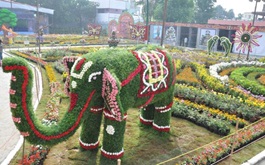
At a distance of 1 Kms from Tirumala Bus Station & situated close to TirumalaTirupatiBalaji Temple, Sri Venkateswara Museum is a good place to understand the history and architecture of Tirumala temple. It is located near Vaikunta Queue Complex 2 of Lord Venkateswara Temple. It is one of the popular attractions in Tirumala.
Established in 1980, the Museum wing houses numerous religious artifacts of pooja utensils, along with the time-honored art and architecture. This place has meditation halls for the worshipers to make a peaceful meditation.
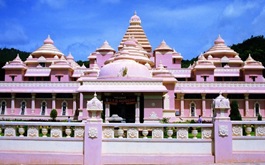
Situated at a distance of 5 km from Tirumala Bus Station & 5 km from Lord Venkateswara Temple, Papa Vinasam is a pretty small waterfall whose waters are treated sacred and have healing powers. As the name denotes, Papavinasam is the place where all the devotees frequent with the belief that a holy bath would redeem them from their sins. Separate dressing rooms are available for both men and women. It is one of the popular attractions in Tirumala.
Since the waterfall is gushes from the top of a hill, it looks picturesquely awesome. Access to this lovely falls through the stony footpath also makes your trip quite enjoyable. Another fabulous site is the reservoir of the nearby dam, which restricts the water flow in the pond. A well maintained park and a garden attributes the charm of the scenic surroundings pretty well.
There are several cabs available to this place from the main temple, both shared and private. This place needs some walking for 5-10 mins.
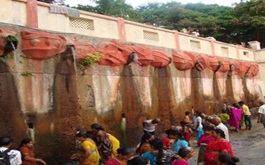
Situated at a distance of 12 km from Tirumala and 7 km from Papavinasanam, ThumburuTheertham holds the story of a gandharva who cursed his wife for her laziness. As per the legend, the lady became a toad who had to survive in the pond till sage Agasthya came there with his disciples. While the great sage described the divinity of the pond to his disciples, the toad regained her Gandharva form and hence this teertham began to be called as Tumburuteertham. It is one of the popular places to visit in Tirumala at a distance of 12 km from TirumalaTirupatiBalaji Temple.
It can be reached by 7 Kms walk from Papa Vinasanam&Kalyani Dam point through stony path. Generally the route is open to public every year on PalgunaPoornima in the month of March. There are about five waterfalls on the way to this place.
No food/water is available on the way to this place, so you should carry some
